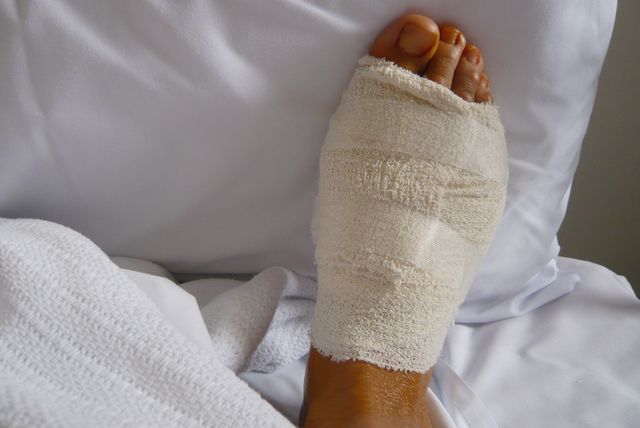Blisters are usually NBD—but that wasn't the case for one 26-year-old Houston-based daycare teacher.
Raul Reyes hurt his foot at work and thought it was swollen because of the injury, his wife Joseline Reyes told the Houston Chronicle. But after a few days, the swelling didn’t go away and a nasty blister formed.
"He woke up the next day and so he went to the clinic, where they told him to get to the emergency room immediately," Joseline told the Houston Chronicle.
Doctors told Raul that his blister was actually a flesh-eating bacteria—and that they'd have to amputate to stop it from spreading through his bloodstream and potentially killing him.
Flesh-eating bacteria, a.k.a. necrotizing fasciitis, can be caused by multiple types of bacteria, including A Streptococcus (group A strep), Klebsiella, Escherichia coli, Staphylococcus aureus, and Aeromonas hydrophila
Doctors believe Raul contracted the infection through an open wound caused by an ingrown toenail, the Houston Chronicle reports.
Before you start eyeing that blister on your heel, you should know that necrotizing fasciitis is pretty rare: Since 2010, approximately 600 to 1,200 cases have occurred each year in the U.S., the CDC reports.
If you have symptoms including warm skin with red or purplish areas of swelling, ulcers, blisters, or black spots on the skin, the CDC recommends seeing a doctor right away.
Although Raul is still in the hospital recovering, his wife says he is staying positive and will be starting therapy for a prosthetic foot. Friends and family set up a GoFundMe campaign to raise money for his medical treatment, including the cost of the prosthetic. They've been able to raise $13,000 so far—$2,000 more than their initial goal.
"He's improving more every day," Joseline explains. "He just really wants to get back to work and go back to a normal life."













